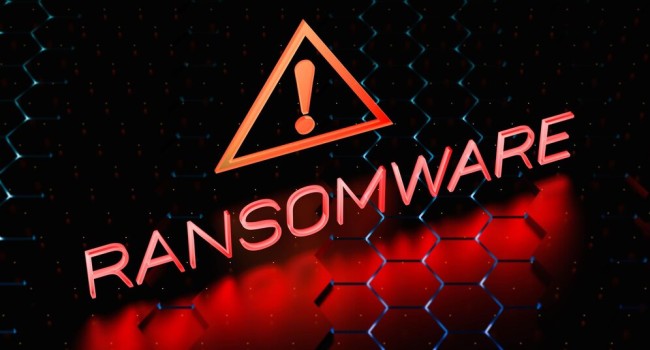
Dealing with malware can be a nightmare. However, the difficulty of repelling cyber attacks depends on the type of malware you’re dealing with. Of all the malware lurking in the digital space, ransomware is by far the most devastating one.
Ransomware infections can completely disable operating systems and render data inaccessible and unusable. That’s because ransomware encrypts data and locks it behind a “pay wall.”
Users must pay the ransom demand to get their data back. Furthermore, ransomware attacks account for 15% of all revenue loss worldwide.
To protect against ransomware attacks and safeguard your data, individuals and organizations must use a combination of tips and tools. That’s precisely what this article will discuss. So, with all that said, let’s begin.
Why Is Ransomware so Dangerous?
Statistics don’t fully explain the danger of a ransomware infection upon an organization. To truly uncover the devastating nature of the malware, we must examine the four main events that occur after ransomware incidents. Those are:
- Data Encryption: The main objective of a ransomware attack is to encrypt your data, rendering it inaccessible. Threat actors hold the decryption key hostage until the victim pays the ransom demand.
- Financial Losses: If the objective is to encrypt data to gain leverage over victims, the aim is to extort money from victims. Losses are almost inevitable when being targeted by advanced ransomware variants. But regardless of the variant, paying the ransom doesn’t guarantee the safe return of your data. In addition, the downtime alone can harm business operations and inflict further financial losses.
- Reputational Damages: In addition to financial losses, being targeted by a ransomware malware attack will lead to all kinds of reputational damages. Ransomware attacks are notoriously bad for business, as they erode customer trust. As a result, suffering a ransomware attack will lead to long-term financial repercussions.
- Data Loss: Data loss events are highly common with ransomware attacks. Victims often refuse to pay the ransom and risk losing their critical data. Without adequate backups in place, you risk permanent data loss. This could have untold consequences for your business, as losing sensitive data (especially customer-related data) can result in costly fines.
Tips and Tools to Defend Against Ransomware
Now, let’s explore the tips and tools to help protect against a potential ransomware attack.
1. Keep Your Software Up-To-Date
Tip: Regularly update your operating system, software, and various antivirus programs.
Why: Outdated software is a gateway for ransomware attacks. Hackers often exploit known vulnerabilities, while software makers release updates that often contain patches for known vulnerabilities that attackers use.
2. Educate Yourself and Your Team
Tip: Train yourself and your employees to recognize phishing emails and suspicious links.
Why: Many ransomware attacks start with a deceptive email or a malicious link. It’s commonly known that phishing and ransomware go hand-in-hand. Therefore, education on both is necessary to truly eliminate the most impactful factor in dealing with malicious code – the human element.
Education through cyber security awareness is key to turning your employees into cybersecurity experts who can detect suspicious emails and avoid falling victim to predatory tactics.
3. Utilize Email Security Software
Tip: Enhance your email security by acquiring software that specifically protects your email communications.
Why: As mentioned previously, email is a common attack vector for ransomware attacks. Hackers often send phishing emails containing suspicious links and attachments that harbor the ransomware. They employ social engineering tactics to trick users into opening these links or downloading the attachments.
Once these actions have been performed, the malware has already infected files and your computer system. Email security solutions are an excellent ransomware prevention tactic. These solutions can detect phishing emails and stop the ransomware threat.
4. Perform Regular Backups
Tip: Always keep backups of your most important files and data. Perform these backups regularly and regularly test your backups.
Why: Backups allow us to recover data without needing to pay the ransom. When performing regular backups, you eliminate the leverage hackers hold over you. Having backups stored offline or on the cloud, away from the clutches of the malware, gives you the upper hand.
With that said, backing up your entire IT infrastructure is a long and difficult process. You can employ specialized third-party backup solutions to help streamline the process.
5. Use Ransomware Protection Software
Tip: Invest in a reputable ransomware prevention and protection software.
Why: These types of software are specifically designed to deal with ransomware attacks and emerging variants. They use threat intelligence to keep up-to-date and modify security measures to adapt to emerging ransomware variants.
These are not necessarily antivirus software but much more powerful and potent tools to block real-time ransomware threats.
6. Develop an Incident Response Plan
Tip: Create a well-defined incident response plan that outlines steps to take in the event of a ransomware attack.
Why: An incident response plan lays out the necessary steps to take when dealing with all kinds of threats, including external, internal, and even natural disasters. Therefore, a well-prepared response can minimize damage and facilitate a swift recovery.
7. Apply the Principle of Least Privilege
Tip: Limit user access rights to only what is necessary for their roles.
Why: Restricting access prevents ransomware from moving laterally within your network, limiting its potential impact.
If your organization operates remotely, you must implement measures to disable remote services, as ransomware is often deployed to hijack remote services, such as Remote Desktop Protocol, and gain access to your organization.
Wrapping Up
Ransomware attacks continue to evolve and pose a significant threat to individuals and organizations.
However, by implementing a comprehensive cybersecurity strategy that combines best practices, tips, and tools, you’re putting safeguards in place to reduce falling victim to ransomware attacks and mitigate its potential damage.
